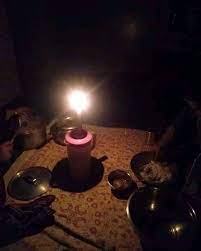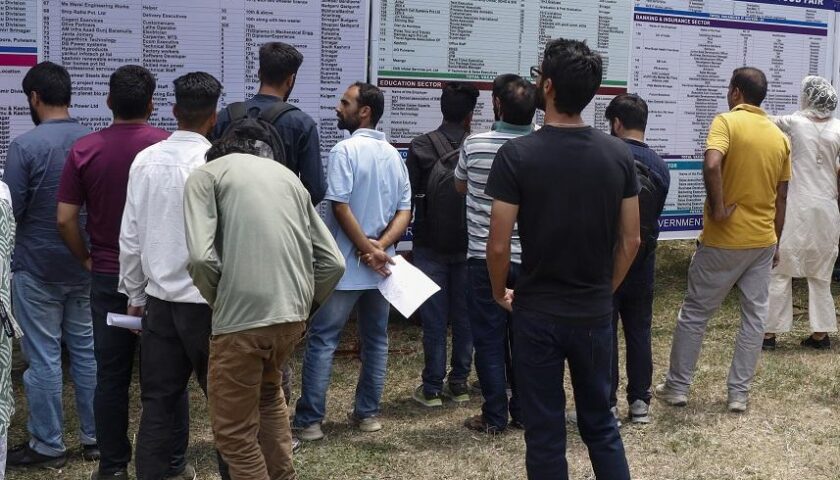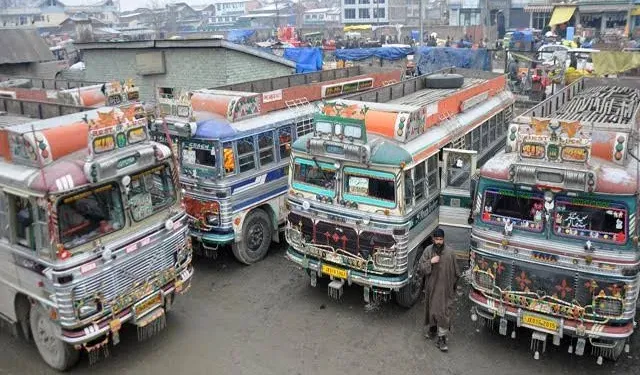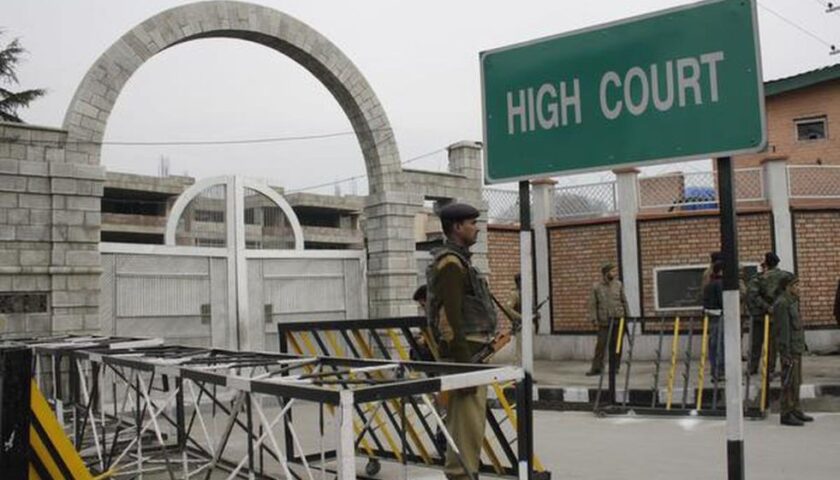Blackouts and Broken Promises: A Tale of Two Cities in Jammu and Kashmir
By: Javid Amin
In the heart of Jammu and Kashmir, a tale of two cities unfolds—a story etched in darkness and disparity. While Jammu basks in the uninterrupted glow of electric lights, Kashmir grapples with an ever-worsening power crisis. Homes plunge into darkness for hours on end, a cruel reminder of a broken promise—the promise of a life illuminated by reliable power.
This isn’t a seasonal inconvenience; it’s a systemic failure with far-reaching consequences. During peak winter and summer, Kashmir transforms into a land of flickering hope. Scheduled and unscheduled power cuts become a grim routine, disrupting daily life, crippling businesses, and casting a shadow over education and healthcare.
A Chilling Reality: The Human Cost of Darkness
Imagine a student hunched over their books, their concentration shattered by the sudden plunge of their room into darkness. Imagine a hospital battling to save lives, relying on unreliable backup generators. Imagine families huddled together for warmth, not because of the biting cold, but because the power outage has rendered their heaters useless.
This is the chilling reality faced by millions of Kashmiris. The power crisis isn’t just an inconvenience; it’s a violation of their basic right to a dignified life. It’s a barrier to education, a threat to health, and a burden on the already struggling economy.
Questions in the Darkness: Where Does the Answer Lie?
Jammu and Kashmir possess substantial hydroelectric generation capacity, enough to theoretically meet its own needs and even export power to neighboring states. Yet, this resource-rich region remains in the dark. The question that begs an answer is: Why?
Fingers Pointing the Blame: A Tangled Web of Issues
Demand-Supply Gap Kashmir’s electricity demand has outpaced its generation capacity. Decades of underinvestment in infrastructure and a growing population have exacerbated this gap.
Transmission Losses The Kashmir Power Distribution Corporation Limited (KPDCL) struggles with high Aggregate Technical and Commercial (AT&C) losses, often attributed to electricity theft. This financial strain limits their ability to purchase sufficient power.
Inter-regional Disparity The allocation of power resources within the Union Territory appears skewed. Kashmiris allege a step-motherly treatment, where resources are diverted to Jammu, leaving them in the dark.
The Glaring Disparity: Why the Step-Motherly Treatment?
This question cuts deep. Kashmiris deserve an explanation for why they are subjected to this disparity. Is it a matter of inadequate infrastructure in Kashmir, or is there a deliberate neglect of their needs? Why does Jammu seemingly enjoy a feast of uninterrupted power, while Kashmiris are forced to endure the rationing of a basic necessity?
Priorities and Broken Promises: Smart City Dreams on Hold
The situation becomes even more perplexing when we consider the government’s plans for Srinagar. Before embarking on an ambitious “Smart City” project, shouldn’t the focus be on fulfilling basic needs like reliable and uninterrupted electricity? Isn’t a well-lit city the foundation for any vision of a smart future? Prioritizing glitzy projects over fundamental necessities raises serious questions about the government’s commitment to the well-being of Kashmiris.
Beyond the Blame Game: Seeking Solutions, Not Scapegoats
Investing in Infrastructure Increased investment in power generation plants, particularly hydroelectric projects, is essential. Modernization of the transmission and distribution network is equally important.
Curbing AT&C Losses KPDCL needs a robust strategy to tackle electricity theft. This involves improved metering, stricter enforcement, and community engagement.
Transparency and Equity A fair and transparent power distribution policy is critical. Ensuring equitable distribution of resources across Jammu and Kashmir is essential for addressing the current disparity.
Renewable Energy Potential Exploring renewable energy sources like solar and wind can help bridge the demand-supply gap and contribute to energy security.
Public-Private Partnerships Collaboration with private entities could foster innovation and expedite infrastructure development.
A Call to Action: Illuminating the Path Forward
The power crisis in Kashmir isn’t just about darkness; it’s about the aspirations of a people yearning for a better future. It’s a call to action for policymakers, stakeholders, and the public to work together.
By investing in infrastructure, tackling AT&C losses, ensuring equitable distribution, exploring renewable energy, and fostering public-private partnerships, we can illuminate the path towards a brighter future for Kashmir.
The People Demand Answers: A Collective Voice for Change
The power crisis in Kashmir isn’t just a technical issue; it’s a social and political one as well. The frustration and anger simmering amongst Kashmiris are reaching a boiling point. Social media platforms are abuzz with #RightToPower and #LightUpKashmir hashtags, reflecting the collective demand for change.
Lost Opportunities and Economic Stagnation
The power crisis stifles Kashmir’s economic potential. Businesses struggle to operate efficiently, hindering growth and job creation. Tourism, a vital sector for the region, suffers as unreliable electricity disrupts essential services in hotels and tourist destinations. This economic stagnation creates a vicious cycle, further hindering investment in infrastructure development, including the power sector itself.
Education in the Dark: A Dim Future for Young Minds
Students in Kashmir bear the brunt of the power crisis. Imagine preparing for exams by candlelight or struggling to complete online assignments with intermittent internet connectivity due to power cuts. This disrupts their education and limits their future prospects. Reliable electricity is a fundamental right, not a privilege, and it’s crucial for fostering a generation of well-educated and empowered youth in Kashmir.
Healthcare Under Strain: A Matter of Life and Death
The power crisis poses a significant threat to healthcare delivery in Kashmir. Hospitals rely on a steady supply of electricity for critical equipment like life support machines and surgical tools. Power cuts can create life-or-death situations, jeopardizing the health and well-being of patients. Upgrading backup power systems is essential, but it’s only a temporary solution. Reliable and uninterrupted power supply is fundamental for ensuring quality healthcare for all Kashmiris.
A Glimmer of Hope: A Roadmap to a Brighter Future
Despite the challenges, there’s a glimmer of hope. Civil society organizations and concerned citizens are mobilizing, demanding action from the government. Initiatives aimed at raising awareness and advocating for equitable power distribution are gaining momentum.
The Path Forward: A Collective Responsibility
The onus of resolving the power crisis in Kashmir lies not just with the government but also with the public. Here’s what each stakeholder can do:
The Government
- Investment: Take immediate steps to address the demand-supply gap by investing in infrastructure, tackling AT&C losses, and ensuring equitable distribution of power across the Union Territory.
- Collaboration: Foster collaborations with public and private entities to expedite power sector development.
The Public
- Advocacy: Participate in peaceful protests and utilize social media platforms to raise awareness about the issue.
- Accountability: Advocate for transparency and accountability from the government.
- Responsible Consumption: Practice responsible electricity consumption and support initiatives to combat electricity theft.
A United Kashmir: Lighting the Way Forward
The power crisis in Kashmir is a complex issue with no easy solutions. However, through a collective effort, a brighter future is possible. By working together, the government, public, and civil society organizations can illuminate the path towards a Kashmir that is not just geographically beautiful, but also powered by reliable electricity, fostering economic growth, educational opportunities, and a robust healthcare system.
Let Kashmir’s story be rewritten from one of darkness and disparity into a narrative of collective action, shared prosperity, and a future bathed in the light of hope and progress.
Beyond Borders: A Regional and National Concern
The power crisis in Kashmir isn’t just a local issue; it has regional and national ramifications. Here’s why:
Regional Security A stable and prosperous Kashmir is crucial for peace and security in the entire region. Unrest fueled by economic hardship and a sense of injustice can have far-reaching consequences. Addressing the power crisis can be a significant step towards fostering stability in the region.
National Integration A nation thrives when all its parts prosper. The power crisis in Kashmir highlights a disparity that hinders national integration. Addressing this issue can demonstrate the government’s commitment to the well-being of all its citizens, regardless of their location.
A Call to National Leadership: A Commitment to Equity
The national leadership has a crucial role to play in resolving the power crisis in Kashmir. Here are some key actions they can take:
Fact-Finding Mission A transparent and independent fact-finding mission can shed light on the reasons behind the inter-regional power disparity and identify solutions.
Resource Allocation Ensuring equitable allocation of resources for power sector development across all regions of Jammu and Kashmir is essential.
National Power Grid Integration Integrating Kashmir more effectively into the national power grid can improve reliability and access to electricity.
A Call to Action: Beyond Borders, Beyond Politics
The power crisis in Kashmir transcends political divides. It’s a humanitarian issue that demands a united response. Here’s how we can move forward:
Cross-Party Dialogue Political parties across the spectrum need to engage in constructive dialogue to find solutions that prioritize the well-being of Kashmiris.
Media Responsibility The media has a vital role to play in holding authorities accountable and ensuring balanced reporting of the issue.
National Discourse Initiating a national discourse on the power crisis in Kashmir can raise awareness and foster empathy for the challenges faced by the region.
Bottom-Line: A Brighter Future for All
The power crisis in Kashmir is a call to action for all stakeholders—the government, the public, and the national leadership. By working together, we can illuminate the path towards a brighter future for Kashmir. This isn’t just about providing electricity; it’s about creating opportunities, fostering hope, and ensuring a life of dignity for all Kashmiris. Let us rewrite the story of Kashmir, not with darkness and despair, but with the brilliance




